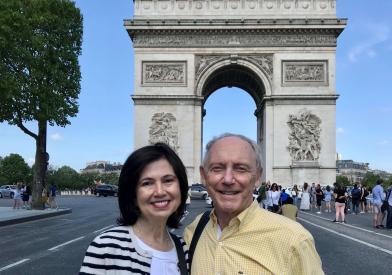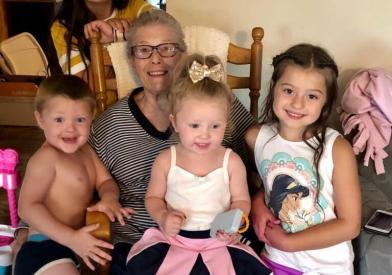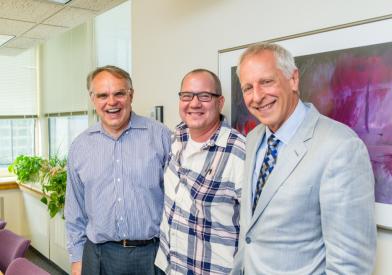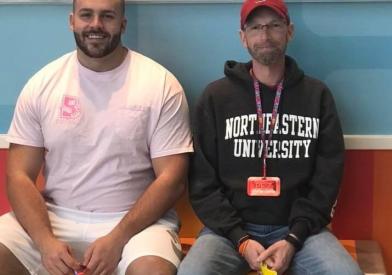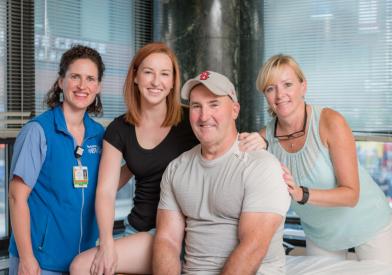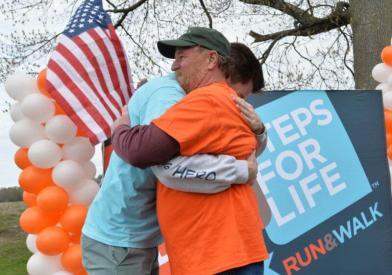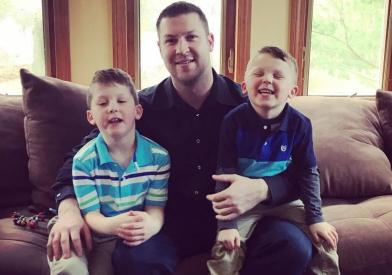
Fifty years ago, Brigham and Women's Hospital and Boston Children's Hospital initiated a joint bone marrow transplant program. In the early 1980s, Dana-Farber launched its own transplant program. When the programs merged in 1996, Joseph Antin, MD, and Robert Soiffer, MD, collaborated to create one of the largest adult programs in the nation, with a robust research engine to improve stem cell transplant treatment and outcomes. It is now one of largest programs in the country and performs more unrelated donor transplants than any other program.
The progress we have made as a program and throughout the field of hematopoietic stem cell transplantation is incredible. Through innovation, research, and advanced patient care, we are able to utilize stem cell transplantation to offer a cure and a better quality of life to an increasing number of patients. Some key advances are summarized below.
Stem Cell Transplant Through the Years

Patient Age
Then
Maximum age was 35.
Now
With the introduction of reduced-intensity regimens and better management of complications, we now transplant patients into their mid-70s — important progress, as blood cancers often affect older individuals.

Annual Transplant Volume
Then
When our programs merged in 1996, we were performing approximately 250 transplants each year.
Now
We perform more than 500 transplants annually.

Donor Types
Then
Related (mainly matched siblings only)
Now
With advances in HLA typing and the understanding of graft-versus-host disease, we have extended our donor pool to include HLA-matched unrelated donors, mismatched unrelated donors, umbilical cord donors, and half-matched family donors (parents, siblings, children, even nieces and nephews).

Stem Cell Sources
Then
Bone marrow harvests were the main source of stem cells.
Now
We can now source stem cells from the bone marrow, peripheral blood, or umbilical cord blood.

Cell Processing
Then
Processed in an individual research lab
Now
Processed and manipulated at our state-of-the-art GMP facility, the Connell and O'Reilly Families Cell Manipulation Core Facility (CMCF). The CMCF conducts advanced processing techniques for stem cell transplants, as well as cell manufacturing for other types of cellular therapy for many types of cancer.

One-Year Survival Outcomes
Then
56–58% (for transplants prior to 2000)
Now
75–76% (based on 2021 Transplant Center-Specific Survival Report from the Center for International Blood and Marrow Transplant Research for unrelated and related donor stem cell transplants)
Thanks to Our Team, Our Patients, and Caregivers

As we mark the 50th anniversary of our program, we extend a heartfelt thanks to our entire team. Whether they are working with patients directly or behind the scenes, our extraordinary team shows an unwavering focus on making the best decisions to help patients through their treatment journey and achieve the best possible outcomes.
We also thank our patients and their caregivers for their trust and commitment to this complex treatment. We will continue working to make stem cell transplant more tolerable and accessible, and achieve even better outcomes.
50 Years of Advancing Stem Cell Transplantation and Cellular Therapies for Cancer Patients
1970s

- Transplant program established as first in New England
- First transplant performed at combined pediatric and adult program at Brigham and Women's Hospital and Boston Children's Hospital
1980s
- Developed antibodies that purge patient's body of their own bone marrow; used first in pediatric patients with ALL; then in adults with leukemia and B-cell lymphoma
- Autologous transplant program began at Dana-Farber Cancer Institute
- Demonstrated safety and effectiveness of T-cell depletion to reduce graft-versus-host disease (GVHD)
- First use of monoclonal antibodies to prevent GVHD
- First use of DNA technology to distinguish host and donor cells from one another in order to reliably document and characterize successful engraftment
- Immunotherapy using interleukin-2 (IL-2) following bone marrow transplants enhances patient's immunity against tumors
1990s

- Demonstrated that effective "purging" of bone marrow associated with improved outcomes for patients with follicular lymphoma
- Joined the National Marrow Donor Program as a transplant, collection, and donor center
- Our research into the biology of GVHD identified cytokines as important contributors to GVHD. Our team identified the role of B cells in GVHD, leading to the development of anti-B cell therapies including ibrutinib. Later, our studies showed that regulatory T cells were deficient in GVHD, leading to the use of IL-2 for chronic GVHD and autoimmune diseases. Related study
- First US use of donor lymphocyte infusion (DLI) as a cure for relapsed leukemia after transplant. Confirmed the immune system role in controlling leukemia. This ultimately led to the use of reduced-intensity transplants, enabling older adults to receive transplant.
- Connell and O'Reilly Families Cell Manipulation Core Facility (CMCF) established as CORE for Dana-Farber/Harvard Cancer Center
- Began development of first drug (defibrotide) with potential to reverse veno-occlusive disease
2000s

- Received FACT accreditation for the stem cell transplant program, stem cell collection program, and lab. With this accreditation, the CMCF can perform complex cell manufacturing and gene therapy.
- Non-myeloablative transplant approach developed to strengthen graft-versus-leukemia effect
- First use of sirolimus for GVHD prevention
- Pasquarello Tissue Bank established to prospectively collect and analyze blood samples for transplant, leukemia and lymphoma research studies. To date, the Bank includes more than 20,000 patients registered and more than 190,000 samples.
- 500th unrelated donor adult transplant
- First CMCF expansion complete; moved to a GMP cell processing facility
- 1000th unrelated blood stem cell transplant
- Demonstrated that immunization with irradiated autologous tumor cells genetically engineered to secrete GM-CSF (GVAX) could induce potent anti-tumor immunity
- Umbilical cord blood donation program launched
2010s

- CMCF manufactures its first CAR T-cell product
- First to demonstrate that immune checkpoint blockade with ipilimumab can induce responses for patients with post-transplant disease relapse
- Based on Dana-Farber Brigham research, FDA approved defibrotide approved for veno-occlusive disease, a serious post-transplant complication
- Immune Effector Cell Therapies Program launched to focus on care and research of emerging cellular therapies
- Based on Dana-Farber Brigham research, FDA approved letermovir for prevention of cytomegalovirus (CMV) infection, common for stem cell transplant patients
- One of first to offer first FDA-approved CAR T-cell therapy for non-Hodgkin lymphoma
- Second CMCF expansion to 30,000 sq. ft which doubled capacity to support cell processing and manufacturing for stem cell transplant and cell therapies
- 5,000th unrelated donor transplant
- 10,000th adult transplant
- Performed first Dana-Farber Brigham transplant in the ambulatory clinic
2020s

- One of first to offer first FDA-approved CAR T-cell therapy for mantle cell lymphoma
- Based on Dana-Farber Brigham research, belumosudil is FDA approved for chronic graft-versus-host disease
- One of first to offer first FDA-approved CAR T-cell therapy for indolent follicular lymphoma and first FDA-approved CAR T product for multiple myeloma
- Based on research led by Leslie Kean, MD, PhD, director of the pediatric stem cell transplant center Dana-Farber/ Boston Children's, abatacept is FDA approved for acute GVHD
- DETERMINATION, a landmark study led by Dana-Farber demonstrates improved progression-free survival for upfront stem cell transplant for multiple myeloma patients
